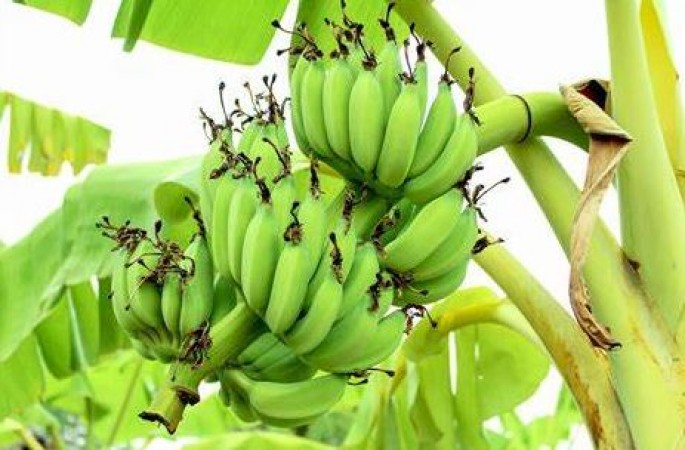
DNA, short for deoxyribonucleic acid, is a fundamental molecule that carries genetic information in all living organisms. It serves as a blueprint for the development, functioning, and reproduction of every life form on Earth. One intriguing fact is that humans share approximately 50% of their DNA with bananas, an idea that might sound bizarre at first. In this article, we will explore the scientific basis behind this surprising revelation and delve into the implications it holds for our understanding of life itself.
The Science of DNA
DNA Structure
Before delving into the specifics of human and banana DNA, it's essential to understand the structure of DNA. It consists of a double helix composed of nucleotide bases: adenine (A), thymine (T), cytosine (C), and guanine (G). These bases pair up in a complementary manner, forming the famous "base pairs."
DNA in Humans
Humans, like all other organisms, have DNA in their cells. Each human cell contains 23 pairs of chromosomes, and within those chromosomes, the genetic code resides. This code governs various traits, characteristics, and susceptibility to certain diseases.
DNA in Bananas
Bananas are not exempt from the wonders of DNA. They also possess DNA that governs their growth, development, and reproduction. While they might seem very different from humans, there are striking similarities hidden within their genetic makeup.
Common DNA Among Living Organisms
Genes and Inheritance
Genes are specific segments of DNA that code for particular traits. Inherited from parents, genes determine various characteristics in an organism, ranging from eye color to disease susceptibility.
Evolutionary Relationships
DNA plays a crucial role in determining evolutionary relationships between species. Scientists use DNA analysis to understand how various organisms are related on the tree of life. Surprisingly, this analysis has revealed a surprising connection between humans and bananas.
The 50% DNA Shared Between Humans and Bananas
Genes with Shared Functions
While humans and bananas may appear worlds apart, there are genes that serve similar functions in both species. These shared genes play roles in fundamental biological processes like metabolism and cell division.
Similarities in Genetic Code
Beyond shared gene functions, researchers have found similarities in the genetic code itself. The same four nucleotide bases, A, T, C, and G, form the genetic code of both humans and bananas. This shared code is a testament to the fundamental unity of life.
Ancestral Connections
The connection between humans and bananas traces back to common ancestors. Millions of years of evolution have shaped both species, leading to the remarkable DNA similarity we observe today.
Perplexity of DNA Similarity
Unexpected Discoveries
The discovery of the significant DNA overlap between humans and bananas caught many scientists off-guard. It challenges conventional notions about the uniqueness of human beings and opens new avenues for research.
Implications for Scientific Research
Studying the shared DNA between humans and bananas offers insights into the genetic mechanisms that underlie life's diversity. It has led to groundbreaking discoveries in genetics and evolutionary biology.
Burstiness in DNA Studies
Advancements in Genetics
The study of DNA has witnessed rapid advancements in recent years. Technological breakthroughs, such as gene editing techniques like CRISPR-Cas9, have revolutionized the way we understand and manipulate genetic information.
Genetic Engineering
The shared DNA between humans and bananas has even sparked discussions about genetic engineering possibilities. While still in the realm of science fiction, the potential to transfer beneficial traits between species has fascinated scientists.
The Significance of DNA Sharing
Understanding Human Health
Research into the similarities between human and banana DNA contributes to our understanding of human health. It aids in identifying genetic predispositions to diseases and developing personalized medicine.
Agriculture and Crop Improvement
For agriculture, comprehending the genetic makeup of bananas is crucial for improving crop yield and resistance to pests and diseases. This knowledge can help ensure food security for future generations.
Conservation Efforts
Understanding genetic connections between species can inform conservation efforts. By recognizing shared genetic heritage, scientists can develop better strategies for protecting endangered species and their habitats.
Misconceptions and Myths
Humans Are Not Bananas
While humans and bananas share a significant amount of DNA, it's essential to understand that this similarity doesn't make us interchangeable with bananas. Humans are a product of a complex interplay of genetic, environmental, and social factors.
The Complexity of Genetic Similarity
The shared DNA between humans and bananas is just one aspect of the vast genomic diversity present on Earth. Genetic similarity is not a straightforward concept and requires careful examination.
In conclusion, the discovery that humans share about 50% of their DNA with bananas exemplifies the interconnectedness of all life on Earth. Despite our apparent differences, we are united by a common genetic heritage. This revelation has profound implications for scientific research, human health, agriculture, and conservation. By appreciating the complexity of genetic similarity, we gain a deeper understanding of our place in the natural world.
High-Tech Health Gadgets: Monitoring and Managing Your Well-being
"Indian Cuisine: A Melting Pot of Diverse Traditions and Modern Trends"
The Digital Evolution: Exploring the Transformative Role of Social Media in Youth Culture